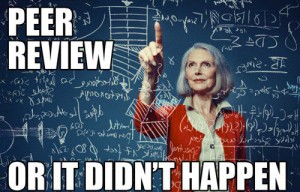Before the break of summer I attended
“Virtual reality and serious gaming for the prevention and treatment of psychological and behavioral disorders“
of the EMGO+ E-HealthExcellence network at the VU University. Some of the first clinical trials being run with VR/AR and games as therapeutic tools – in these areas – and their results were presented. Results which are very promising.
One of the ways to treat immobilizing/irrational fear – a phobia – is what is known as In vivo exposure. The patient is exposed to the thing that induces fear, in the safe environment of a therapeutic setting, until the fear diminishes to functional levels or goes away entirely. This kind of therapy, although very effective, is also described as the cruellest cure. To quote prof. dr. Cristina Botella, it is “quite complicated to face the reality of our fears”. Virtual or Augmented Reality can provide tools to help connect the safe therapeutic environment and the real world, whilst maintaining a level of control that allows the therapeutic environment to be safe.
VR and AR would allow for control of the exposure, both by the therapist and the patient. It allows for a very personalized experience in the sense of exposure hierarchy, placement and content creation. Occurrence and repetition are at will and not bound by practical limitations. For instance, when treating a patient with a phobia of flying you would not have to be in an airplane.
During their research prof. dr. Cristina Botella a.o. have developed a therapeutic lamp – think projection not lightbulb- specifically for In vivo exposure treatment of small animal phobias (please read more here) and have had excellent results.
Prof. dr. Rosa Banos discussed the possibilities of Virtual Reality to induce different moods by using a VR headset in a lab procedure known as MIP (Mood Induction Procedure). She has found that VR can most definitely be used as a tool for Mood Induction and that the effect of VR was stronger than that of ‘traditional stimuli’ such as pictures, written narrative or guided imagination exercises. This might be because VR is more of an experience than traditional stimuli, which are more of a confrontation than an experience. In achieving the difference between a confrontation of a stimuli or the experience of a stimuli, a sense of ’presence’ seems to be an important factor. The more we have a sense of presence, the more we are having an experience rather than a confrontation. Experiences build new memories.
One of the presentations focused on a serious game from New Zealand called SPARX. SPARX was developed to help battle depression in adolescents and has proven itself to be effective. Dr. Theresa Flemming has guided the development and the effectiveness study of this particular game. During the presentation she pointed out that often in the making of therapeutic games – dazzled by this new environment of a game setting- common elements of therapy are lost or hard to translate. Here is definite room for improvement in the next-gen of therapeutic game-development. For instance ; the relationship with the therapist is a cornerstone of any therapeutic interaction, where does this relationship go in a gaming environment? The gaming environment of SPARX proved especially suited to convey the hope that depression is beatable and very suited for practicing skills that would help halt or prevent depression.
It might seem as if the results from the presented research is obvious or even old. And indeed, sadly scientific research is often lagging behind the technical/artistic/social development. But these are not anecdotes, these results are not based on self-report and survey measures, they are not extrapolated form lab-experiments. These are clinical trails – with measurable therapeutic effect. It makes me very happy to see that what we might ‘already know’ minutely dissected, rigorously tested and still standing for all of us to see and build upon.
Welcome to the age of new therapeutic tools.

